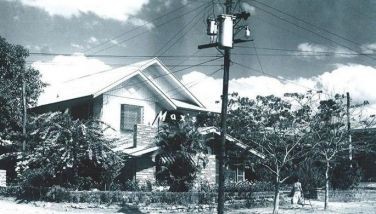Stale claim

Rights of action and right of ownership may be lost through lapse of time either by laches or prescription. This case explains the difference between laches and prescription.
This case involves a 7,275-square-meter parcel of land situated in a Central Luzon province owned by spouses Jorge and Lisa with an Original Certificate of Title (OCT) No. 8705 (subject land). Jorge and Lisa have three children Danny, Tessie and Fely.
When Danny got married about 50 years ago, his parents Jorge and Lisa donated to him three parcels of land, including the subject land and a carabao in celebration of his marriage to Tina by executing a Donation propter nuptias (Inventario Matrimonio). In order to prove their acceptance of the donation, Danny and Tina signed a receipt and gave it to their father, Jorge. Immediately thereafter, they occupied and took possession of the subject land as the owner thereof.
About 52 years later when Danny and his parents Jorge and Lisa were already dead, the children of Tessie and Fely presented a Deed of Succession and Adjudication stating that the subject land was subdivided into three lots and adjudicated to Danny, Tessie and Fely in equal shares using a reconstituted copy of the OCT 8705 which was allegedly lost.
This prompted the heirs of Danny to file a Complaint for Quieting of Title Declaration of Nullity of Document and surrender of the title. They claimed ownership of subject land by virtue of the donation executed by Jorge and Lisa when Danny got married, so the Deed of Adjudication is null and void. In fact, even the signature of Jorge therein is a forgery as Jorge was already dead when it was executed. Even the thumbmark of Danny appearing on the deed was spurious as he never appeared before a notary.
The heirs of Tessie and Fely, on the other hand, claimed that the donation was void for there was no valid acceptance. On the other hand, the Deed of Adjudication was duly executed and notarized. Danny’s wife Tina was even present when Danny signed it and did not raise any objection, they claimed.
In their reply, the heirs of Danny countered that the donation is valid even if there was no acceptance since Danny was only 17 years old at that time. Besides, the heirs of Tessie and Fely only contested the donation 50 years after its execution. Thus their claim had already been barred by prescription.
The RTC found the donation is really void for lack of notarization but nevertheless ruled that the heirs of Danny had already acquired ownership through acquisitive prescription. Further, the RTC ruled that laches has already set in because the heirs of Tessie and Fely failed to assail the validity of the donation. Neither did they assert their successional rights over the subject land. This decision was affirmed by the Court of Appeals (CA). Were the RTC and the CA correct?
The Supreme Court (SC) said yes. According to the SC, while the Deed of Donation is really void as it is not in a public instrument, it can still serve as a legal basis of adverse possession. A private document of donation can be the basis of a claim of ownership if there is clear and convincing evidence of possession like in the instant case. However, the possession of subject land had ripened into ownership by the heirs of Danny not because of acquisitive prescription but only because of laches.
Laches is the failure or neglect for an unreasonable or unexplained length of time to do that which could or should have been done earlier by exercising due diligence. Such failure or neglect warrants a presumption that he has abandoned his right or declined to assert it.
Prescription, on the other hand, refers to the failure or delay to assert a claim within the period prescribed by law. Likewise, rights and action are lost on the same ground. Thus, there are two kinds of prescription: (1) the acquisition of a right by the lapse of time or acquisitive prescription and (2) the loss of a right of action by lapse of time or extinctive prescription.
While Danny and Tina and their children have been in uninterrupted, continuous, public and adverse possession of subject land for 50 years, such possession will not ripen into ownership on the ground of acquisitive prescription as the subject land is a registered land.
But their possession had ripened into ownership by reason of laches. The doctrine of laches, also known as a stale demand, is based on public policy, which requires, for the peace of society, the discouragement of stale claims. It is not a mere question of time, but is principally a question of the inequity and unfairness of permitting a stale right or claim to be enforced or asserted.
Truly, the law serves those who are vigilant and diligent, not those who sleep when the law requires them to act. The inaction of the heirs of Tessie and Fely for a period of 50 years already converted into stale demand their right over the subject land. Silence, delay or neglect in asserting and enforcing one’s right for an unexplained long period of time gives rise to a presumption that there is no merit at all in one’s claim.
Laws must come to the assistance of the vigilant, not of the sleepy. The Deed of Adjudication and Succession is likewise null and void since it was executed at the time when the heirs of Danny had already acquired ownership of the subject land. So, the decision of the CA affirming the decision of the RTC is affirmed (Heirs of Lorenzo et.al. vs. Heirs of Eustaquio etc, G.R. 209435, Aug. 10, 2022).
* * *
Email: js0711192@gmail.com
- Latest
- Trending




























